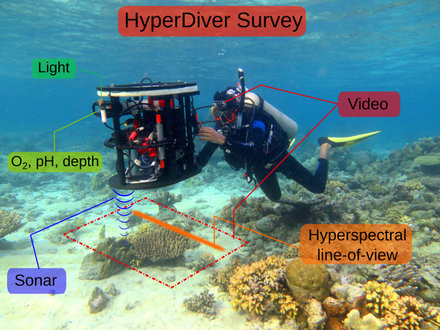Digitizing the Coral Reef: You Can Only Protect What You Know

Climate change affects many parts of the world, bringing with it ocean acidification. Coral reefs are particularly vulnerable to the increasing acidification of the oceans. Now scientists from Bremen, Germany developed a new method to measure the status of coral reefs, in a more complete way than before. They present their system in a video.
With the HyperDiver system a diver can scan up to 40 square meters of the reef every minute. The spatial resolution is in the centimeter range. The large amount of data is analyzed by a self-learning program to create detailed maps of the seafloor. This is considerably faster and more comprehensive than conventional methods, in which trained divers must manually identify the reef organisms, which limits the extent of the reef that can be covered.
Source: Max Planck Institute for Marine Microbiology
"The novel development is the collection of underwater spectral images and the analysis by a computer program with a self-learning algorithm," explains Chennu. "We train the program to identify the reef organisms. This is similar to automated face recognition from video surveillance." His colleague Joost den Haan adds: "This technique allows us to create a visual map of the biodiversity of coral reefs. The more coral reefs we map, the better the system can distinguish the variety of coral species. Now it is possible to accurately detect the present condition of the reefs and to monitor any changes." The researchers are very satisfied with their first results. With the success of the pilot study, Chennu and den Haan hope that their system will soon be used worldwide towards the monitoring and protection of coral reefs. Here they present the HyperDiver technique in a short video.

